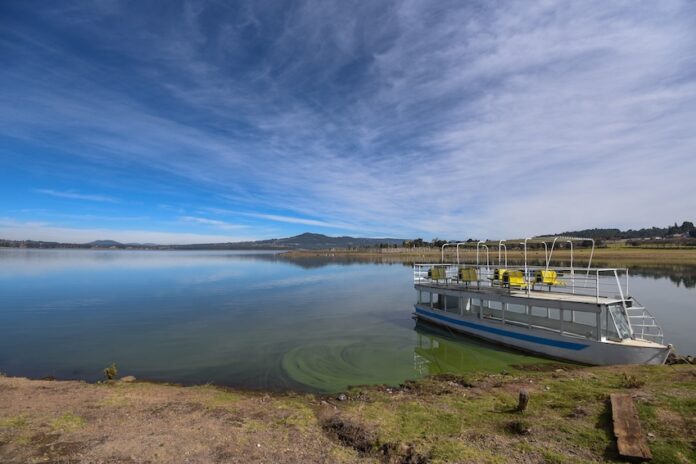The Cutzamala System — the chief source of water for the Valley of Mexico — is now operating at 70.7% capacity, its highest storage level since 2020, Mexico’s National Water Commission (Conagua) reported on Tuesday.
The rise in the water levels is the result of recent heavy summer rains, according to Citlali Peraza Camacho, the director of the Valley of Mexico Water Basin Authority (OCAVM).
“In 2020, storage was 63.38%,” Peraza said. “As of today, we have the highest storage level [since then].”
The system is one of the largest and most important water infrastructures in Mexico, using a network of canals, pipelines, tunnels, dams, reservoirs, treatment plants and storage tanks to supply water to the Mexico City metropolitan area, including the capitial of México state, Toluca. It is some four times larger than the secondary Lerma System.
Combined, Cutzamala’s principal dams — Valle de Bravo, El Bosque and Villa Victoria — are 27% fuller than a year ago. From that time through May of this year water levels fell sharply due to drought, leading to widespread water service cuts in the Valley of Mexico.
But after falling to 48.9% in May, the Cutzamala system recovered to 56% capacity following historic rainfall in central Mexico and continued to rise to today’s five-year high.
The Villa Victoria Dam currently has 117 million cubic meters of water stored, or 63% of its capacity, while El Bosque Dam has 124 million cubic meters, or 61.7% of capacity, and the Valle de Bravo Dam stands at 310 million cubic meters, or 78.8%, according to Peraza.
Between August 18 and 24, the average flow from the Cutzamala system to Mexico City and México state was 10.7 cubic meters per second.
While the higher water levels help the OCAVM better plan the region’s water distribution over the coming months, they do not fully remove the threat of water scarcity. The Cutzamala’s level is still below the historical average, and the weather can change rapidly, with rainfall expected to decrease in the coming months.
Conagua stresses, therefore, that water must continue to be used carefully. It recommends reducing unnecessary consumption and adopting sustainable habits to help avoid shortages.
With reports from Milenio and La Jornada
